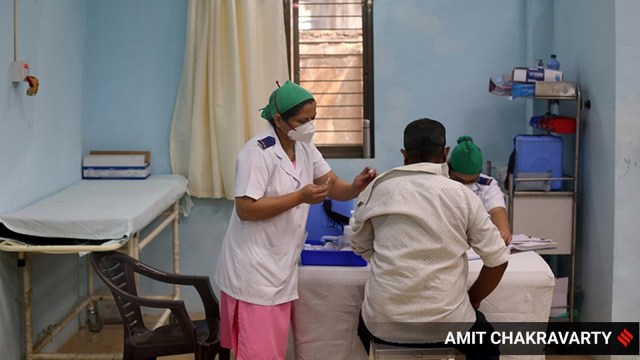What is the Chandipura virus (CHPV): Know the symptoms, treatment, prevention, and more
Previous outbreaks occurred in 2003–04 in parts of central India, resulting in the deaths of over 300 children in Maharashtra, Gujarat, and Andhra Pradesh. Here's all you need to know.
 According to data from the SSG hospital in Vadodara, as of Friday afternoon, a total of 11 suspected cases of CHPV are currently under treatment at the hospital. (File photo | Biswanath Swain, EPS)
According to data from the SSG hospital in Vadodara, as of Friday afternoon, a total of 11 suspected cases of CHPV are currently under treatment at the hospital. (File photo | Biswanath Swain, EPS)The toll in suspected cases of Chandipura Viral Encephalitis (CHPV) rose to 20 in Gujarat, including two deaths reported from Ahmedabad city. Additionally, 35 people showing symptoms of CHPV are admitted to various civil hospitals across districts.
In response to this outbreak, Gujarat Health Minister Rushikesh Patel has initiated preventive measures in the affected areas. Over 50,000 individuals have been screened, and all district and rural hospitals have been instructed to send samples of suspected cases to NIV for further testing.
Health officials anticipate a potential surge in cases in the coming days, as more confirmations are expected from NIV. Notably, this is not the first outbreak of the Chandipura virus in the country; there were outbreaks in 2003–04 in parts of central India, including Maharashtra, Gujarat, and Andhra Pradesh, that caused the deaths of over 300 children. Here’s all you need to know about Chandipura Viral Encephalitis (CHPV).
Chandipura virus (CHPV): What is it and how is it transmitted?
CHPV is a virus that belongs to the Rhabdoviridae family, which includes rabies. It is transmitted by sandflies and mosquitoes, including Aedes aegypti, which is also a vector for dengue. The virus resides in the salivary glands of these insects and can be transmitted to humans or domestic animals through bites.
The infection can lead to encephalitis and inflammation of the brain’s active tissues. The Chandipura virus, part of the Vesiculovirus genus, was discovered in 1965 in the blood of two individuals suffering from febrile sickness in a hamlet near Nagpur, Maharashtra.
The virus is spread by the female phlebotomine sandfly, which is abundant during the early monsoon season. Sergentomyia sandflies play a role in the virus’s spread, with Aedes aegypti being highly susceptible and effective in laboratory conditions.
Chandipura infection produces encephalitis, which is the inflammation or swelling of brain tissue. However, no viral isolations from mosquitoes have been documented.
 So far, the state government has reported 14 deaths due to suspected CHPV infection, including one confirmed from the Aravalli district; two other deaths were reported from Morbi, along with one each from Surendranagar and Rajkot.
So far, the state government has reported 14 deaths due to suspected CHPV infection, including one confirmed from the Aravalli district; two other deaths were reported from Morbi, along with one each from Surendranagar and Rajkot.
Chandipura virus (CHPV): Know the symptoms, impact, treatment and prevention
Typical symptoms include a rapid onset of fever, vomiting, altered mental state, convulsions, diarrhoea, neurological deficits, and signs of meningeal irritation. The virus predominantly affects children under the age of 15, mostly in rural areas. Most affected children experience rapid deterioration, with deaths occurring within 48 hours of hospital admission. Enlisted below are some of the symptoms:
- Sudden fever onset
- Vomiting
- Changes in mental status
- Seizures
- Diarrhea
- Impaired neurological function (e.g., difficulty speaking, loss of balance, vision changes)
- Meningeal irritation (evidenced by symptoms such as headaches, stiff neck, sensitivity to light, and seizures)
Currently, there is no specific antiviral treatment or vaccine available for the Chandipura virus. Early diagnosis and supportive care, such as managing airways, fluid balance, and the prevention of secondary bacterial infections, are essential for patient management.
Prevention strategies include vector control, identifying and eliminating sandfly breeding sites, and using protective measures to prevent sandfly bites, such as wearing protective clothing and using repellents and nets.
Environmental control, including proper waste disposal and sanitation, is also critical to preventing the spread of the virus. Public health authorities must take proactive measures to curb the spread of the virus and provide the necessary support and resources to the affected regions.





- 01
- 02
- 03
- 04
- 05


























